The Apple Watch Review
by Joshua Ho & Brandon Chester on July 20, 2015 8:00 AM EST- Posted in
- Wearables
- Apple
- Mobile
- Apple Watch
Design
With a new form factor comes the need to deeply analyze design, and in the case of a smartwatch it really becomes more important than ever before. Like clothing, watches are deeply personal in a way that smartphones weren’t. The most immediate aspect of the Apple Watch is the size. I’ve used the Moto 360 before, and while I didn’t think it was too big for me, people with smaller wrists can look rather ridiculous wearing the Moto 360 or many other smartwatches. Even in the 42mm variant, the Apple Watch is surprisingly small for a smartwatch. The 38mm variant is definitely sized for people with smaller wrists.
Outside of height and width, the thickness of the watch is definitely a bit more than what one might expect from a regular watch, but it isn’t really all that noticeable due to the rounded curves of the casing. When looking at the display, the display’s cover glass also blends seamlessly into the metal case of the watch, which really looks impressive indoors, although the illusion is somewhat lost in strong sunlight as it becomes obvious where the display ends and the bezel begins. This really helps with analog watchfaces, but in practice I found I was never really bothered by rectangular watch displays. If anything, I’ve found round watch display to lack information density; round watch displays just aren’t pragmatic for general purpose computing.
In order to really give a sense of what the watch looks and feels like when it’s on the wrist, I’m going to start by assuming that most people will wear this watch on their left hand. This places the side button and digital crown on the right. If you read nothing else in this entire article, you should know that the digital crown is probably the best solution I’ve seen to the smartwatch input problem yet. The digital crown manages to have just the right amount of friction to the knob so input feels deliberate without being difficult. The notches that surround the crown really help with gripping the crown and improve the precision of input with the digital crown. Both the digital crown and side button have a solid, clicky action, but it’s probably not a surprise at this point given that Apple seems to consistently nail down details like button feel on their iPads and iPhones.
On the left side of the watch, the only notable interruptions are the speaker and microphone holes. As far as I can tell there’s only a single microphone hole, but it seems that Apple has some form of noise cancellation as background noise is generally well-muffled.
The top and bottom of the watch are just the attachment points for the bands of the watch, but from a design perspective this is probably one of the most crucial. The interchangeable bands work incredibly well because of just how easy it is to attach and detach bands. Attaching a band is as simple as matching with the slot and sliding it in, although it is possible to get it wrong by putting a band in upside-down. The fit and finish of both the Milanese loop and sport band that I received were both essentially perfect here, and the Milanese loop band has a glossy finish on the side that helps the band to blend in with the casing of the watch.
The bands themselves are probably the most important aspect of the Apple Watch's design. While Apple definitely hopes that users will be purchasing bands in addition to the one that comes with their watch, it's a safe bet that most users will be using the fluoroelastomer bands that ship with the Apple Watch Sport and the entry level Apple Watch and Apple Watch Edition models. Because the fluoroelastomer band ships with the Sport version of the watch and has to fit every wrist size the fluoroelastomer band actually is more like one and a half bands. Included in the package is the section of the strap with the metal pin, and two pieces of different lengths with holes in them. The longer one is meant for users with larger wrists, and the smaller one for users with smaller wrists.
As for the band itself, the feel of it can be difficult to describe. When they were first revealed, my initial thought was that they would have a somewhat firm and rubbery feel. It turns out that the bands are very flexible, and also very soft. The best description I could give is that it feels similar to the soft touch back of the black Nexus 5 and Nexus 9, but much smoother and very resistant to smudges. Water also tends to roll right off of it which makes it very well suited to fitness activities. Since it's not infinitely adjustable there's always a small mismatch between the size of the band and the size of your wrist, but there's not much that can be done to solve that with a pin and tuck design.
In the case of the Milanese loop, the infinitely adjustable design has basically solved the teething issues I have with wearing most watches. The band manages to deal with the issues I’ve always had with wristbands that always seemed to be either too tight or too loose. The fabric-like pattern of the metal links also helps to distribute pressure while allowing for ventilation, so I don’t feel the need to constantly take off the watch due to trapped sweat or some similar issue. It’s also easy to clean the metal bands if they get dirty, although I suspect the leather bands will be rather difficult to deal with in this regard. There is some potential to pinch hairs, but in my experience this is pretty unlikely and I can count on one hand the number of times I’ve noticed this problem in the past few months. As a result, this is probably the only watch I’ve ever worn that is consistently comfortable regardless of weather conditions. Independent of how good the wearable is from a digital logic/software standpoint, I’ve noticed that these aspects of the design are far, far more crucial than anyone seems to notice. In the case of Apple Watch, the bands are pretty much as good as it gets.
Moving past the bands, the back of the watch is somewhat unremarkable. There’s a rounded crystal that houses the heart rate LEDs and sensors, and serves as an attachment point for the MagSafe wireless charger. In practice, the only notable issue here is that the crystal seems to act as a pressure point when wearing the Watch, but it’s likely that this is done to ensure proper contact for the heart rate monitor.
Overall, Apple has pretty much nailed the design of the watch. The controls are well-executed and placed in a pragmatic position, in a way that I haven’t really seen anyone else achieve yet. The only real objection I have to the design is that the stainless steel casing seems to be a magnet for small scratches. They’re tough to see in most conditions, but with strong lighting it becomes pretty obvious that it’s pretty easy to scratch the watch casing. I suspect the only solution here is to regularly buff out scratches from the casing like most any stainless steel watch. As for the Apple Watch Sport, the 7000 series aluminum seems to hold up to daily use without any sign of scratches or chips on the casing of the watch. At 25g and 30g for the 38mm and 42mm respectively it's also lighter than the 40g and 50g masses of the stainless steel models. Since the Sport edition uses Ion-X glass like the iPhone 6 instead of the Sapphire crystal of the normal Apple Watch and Apple Watch Edition, the display cover glass is much more susceptible to scratching. While I haven't encountered any scratches at this point, the sapphire glass editions will undoubtedly better stand the test of time.




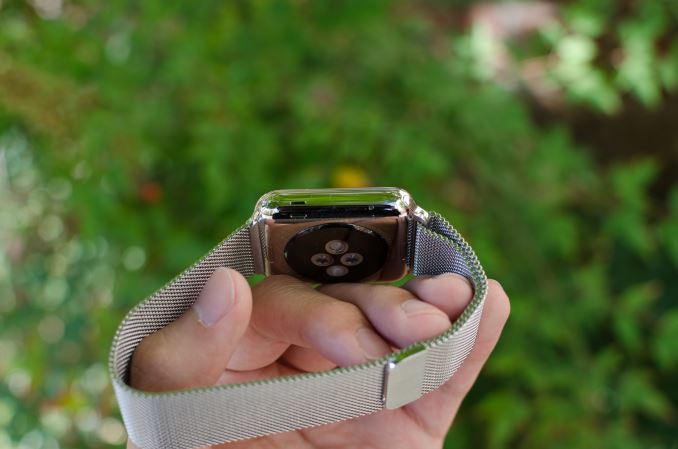
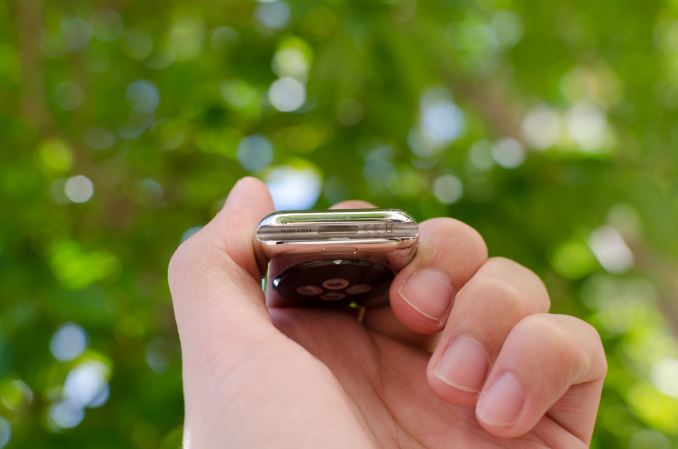
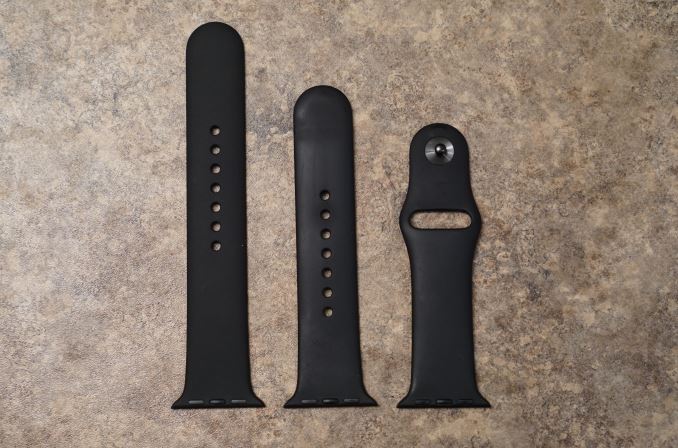
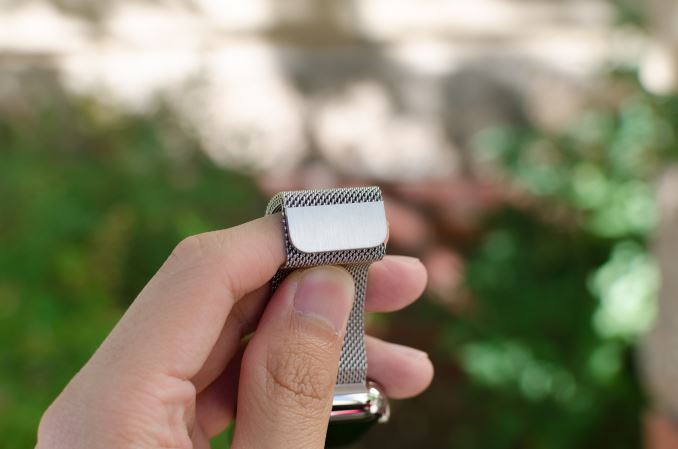
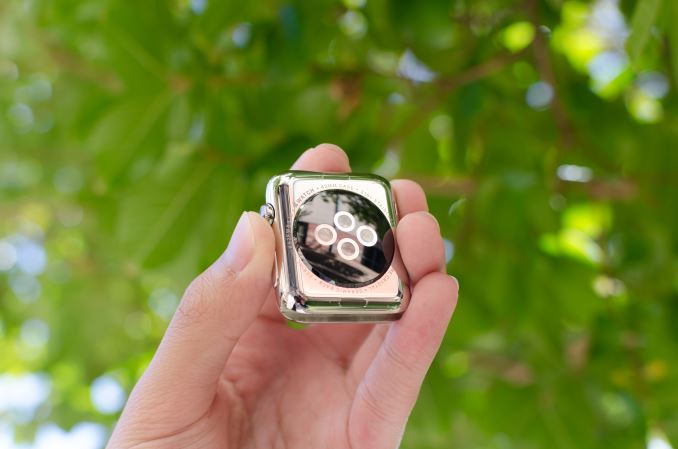








270 Comments
View All Comments
BoberFett - Monday, July 20, 2015 - link
I've only read reviews, no personal experience, but I believe the LG G Watch is supposed to have an always on display while also lasting 1+ days. If the Apple can only do one day while having it's display off 95% of the time, Apple failed there.KPOM - Monday, July 20, 2015 - link
The LG watch is bigger and has a bigger battery. I haven't seen it live, but I did see a Moto 360 in person on Friday. It looks like a hockey puck strapped to your wrist. I couldn't wear one. But I like my 38mm Apple Watch. It's a good size.PeteoBos - Monday, July 20, 2015 - link
Battery life has not (for the most part) been an issue for me. It lasts a day most of the time including using the heart rate monitor during workouts (around 1 hour a day) I just plop it on the charger when I plug my phone in at night. Its really no issue at all. Only time it cant last is when i'm going on a 4-8 hour hike. at that point i just charge it when i get home or if its a multi day hike I have a small, very light battery pack that can charge my phone and watch 2 times. You are not going to find a heart rate monitor that lasts much more then a day or 2 that is also a smart watch. I use the watch to look @ topo's while I'm hiking so I know where I am.. I know this is hard to believe for allot of andad readers, but the Watch has been great and very useful device for me.Qwertilot - Monday, July 20, 2015 - link
Getting information (compass, grid ref etc) while walking non trivial distances definitely seems to be one of the things where smart watches have a fairly clear cut use case. Or even normal watches come to that :)(Even the Apple watches seem to start slightly cheaper than the dedicated GPS watches which will actually give you a grid ref.).
LongTimePCUser - Monday, July 20, 2015 - link
The Fitbit Charge HR reads heart rate continuously and counts steps and floors climbed continuously. It also tracks sleep.The battery lasts 3 - 4 days. A week would be better. But 3-4 days is acceptable.
A watch that dies in few hours if you turn on heart rate monitor is just not useful. You certainly can't track your sleep patterns if you have to charge it over night.
PeteoBos - Monday, July 20, 2015 - link
Fitbit Charge HR is an activity tracker and cant do the myriad of things of things my apple watch can. for some people that will be fine, for me i want a smart watchQwertilot - Tuesday, July 21, 2015 - link
If you're walking the sorts of distances that keen walkers are, you really don't need an activity tracker because you already know its much more than enough :)name99 - Monday, July 20, 2015 - link
"That's precisely why this is a very poor watch -- and even smart watch"Your comment is as idiotic as when RIM's CEO was claiming that the iPhone sucked because it was a lousy phone...
The iPhone is a POCKET COMPUTER that was initially marketed (but not DESIGNED) as a cell phone so that people would understand the value proposition. Once people DID understand the value proposition, it was allowed to blossom into its full computer-hood.
The Apple Watch is a WRIST COMPUTER that is marketed (but not designed) as a watch, once again to show people the value proposition. And within a year or two, once agains as the value proposition is understood, the watch part will recede into the background and it will be allowed to blossom into its full computer-hood. Apple seems to be running the schedule faster with aWatch than with iPhone (WatchOS2 is already exposing more of the computer-hood) but this may be limited to the geek sector --- the real turning point will be when they change the focus of the advertising from watch issues to more general things, and we may still be a year or so from that.
KPOM - Monday, July 20, 2015 - link
Technology isn't there yet. If Apple wanted it to last a week, they could make a Pebble, but then everyone would complain that it doesn't do anything. It easily lasts 24 hours for me (it could probably go 30 hours most of the time). I charge it less often than my iPhone or iPad.Ryan Smith - Monday, July 20, 2015 - link
For the sake of transparency, two comments have been deleted.I need to be very clear here: in our comments section we do not allow profanity, and we do not allow threats of violence (even if they are exaggerated for effect). Please be civil.